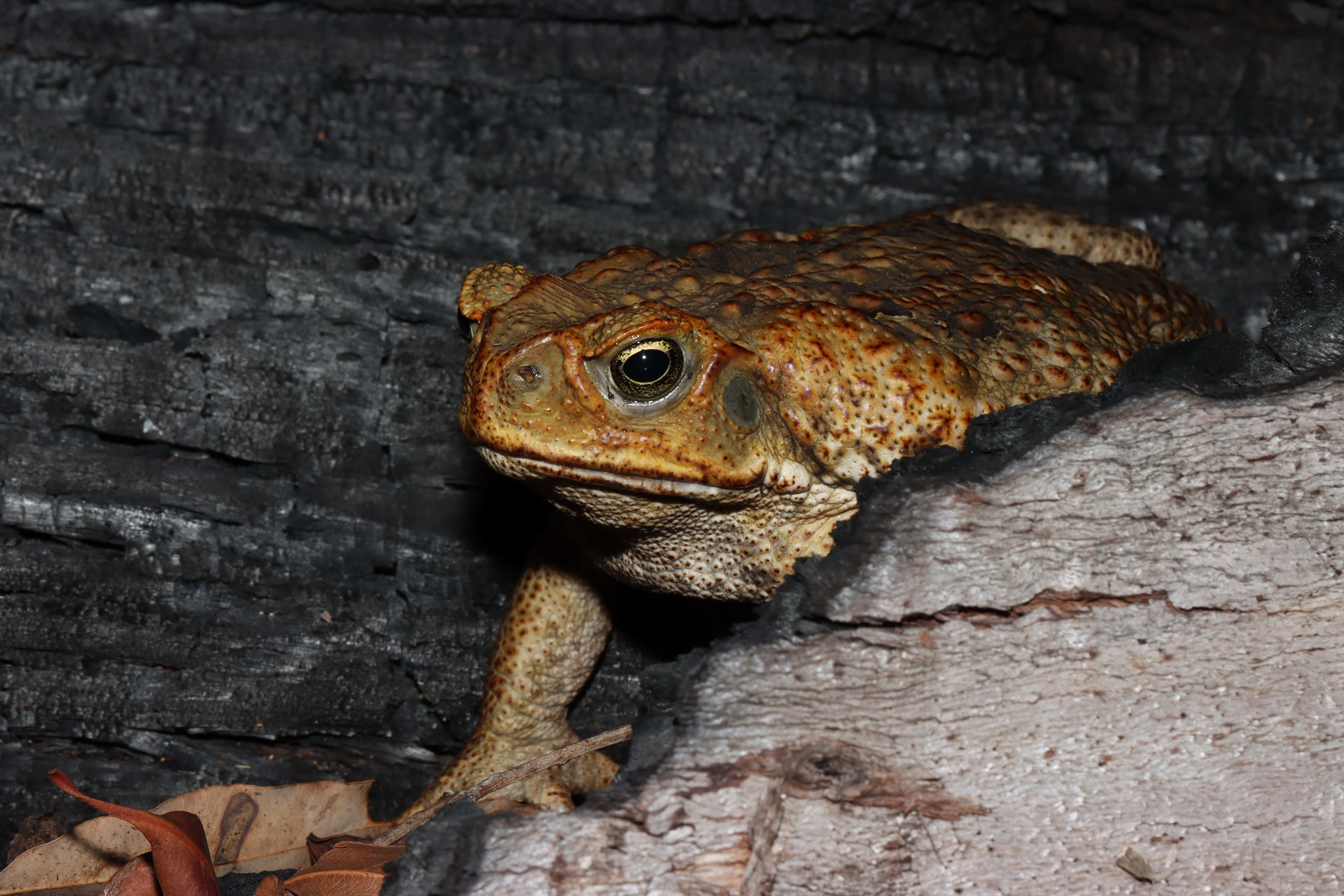News release
From:
With the rise of extreme weather events like bushfires, droughts and floods in recent years, natural ecosystems around Australia and the world more widely have been disrupted in many ways. From habitat destruction to direct mortality, the effects of these events are still being uncovered, with a new study exploring the impact of intense fires on parasite loads in cane toads.
Scientists from Macquarie University have found that post-fire landscapes may advantage invasive species due to changes to host–parasite interactions. Looking at cane toads (Rhinella marina) in near-coastal sites in Eastern Australia, the researchers discovered that lungworm (Rhabdias pseudosphaerocephala) populations were substantially reduced in burned areas. This is compared to cane toads in untouched, unburned areas.
“At first sight, we might expect an intense fire to be deadly to an invasive amphibian such as the cane toad by killing toads and drying out their habitats. However, cane toads actively prefer relatively open habitats for foraging and thus can thrive in post-fire landscapes. With the discovery that the harmful parasites that effect these creatures are also reduced thanks to fire, cane toads seemingly flourish in these evolved conditions,” says author Professor Rick Shine from Macquarie University’s Department of Biological Sciences.
The researchers obtained data on parasite loads of 572 toads (471 adults, 101 juveniles), 279 of which were from five burned sites and 293 from five unburned sites. Of those 572 toads, 35% contained lung-worms in the left lung. Interestingly, the adult cane toads in the burned areas fared better than their younger counterparts, with the parasite loads of small toads unaffected by fire.
“Traditionally, a toad’s size impacts its parasite load due to a number of differing factors including their age, immunity and nomadic behaviours. To see the presence of lung parasites reduced significantly in adult-sized cane toads as a result of intense fires will now help us to further uncover the ways in which these invasive creatures adapt to their ever-changing environments,” says lead author Shannon Kaiser from Macquarie University’s Department of Biological Sciences.
“Naturally invasive cane toads are very flexible, thriving in highly modified habitats, our research suggests that abiotic shifts caused by intense fire may contribute to that success, by releasing invaders from the negative effects of parasites,” says author Dr Matthew Greenlees.
This is the first study of its kind to assess the impacts of fires on parasite loads of invasive species. The findings were published in Biology Letters.



 Australia; NSW
Australia; NSW



